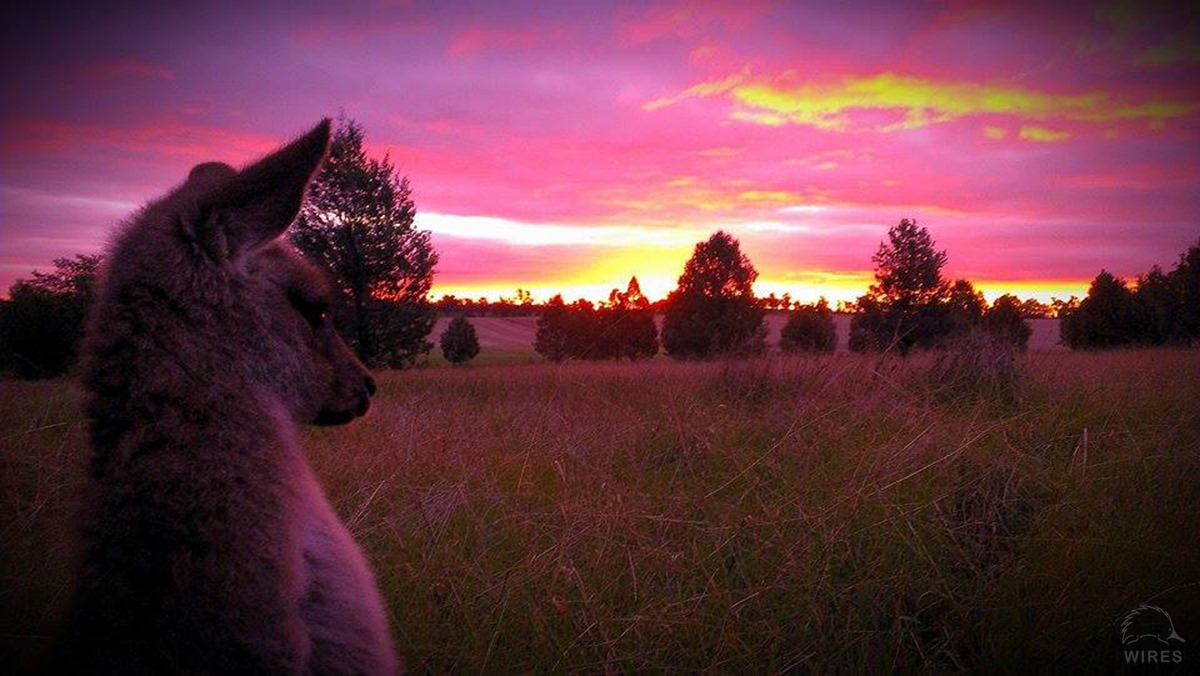WIRES (NSW Wildlife Information, Rescue and Education Service Inc.) is one of the largest wildlife groups in Australia. It has been rescuing and caring for native animals since 1985, and has over 2500 volunteers in 28 Branches across NSW. WIRES assist tens of thousands of animals every year, receiving over 95,000 requests for rescue assistance in the last financial year.
What sets WIRES apart from other wildlife rescue organisations in Australia? At WIRES we dont just focus on rescuing and caring for wildlife – although that is one of our major roles. As indicated in our name, we also provide information and education to the public about how to live harmoniously with wildlife. Being such a large and diverse organisation means that we have a large number of members, many with extensive and longstanding experience and expertise. All our members receive rigorous and thorough training. As an organisation we work closely with vets and maintain currency and best practice with wildlife care.
Why is WIRES so crucial to the NSW area?
Covering both metropolitan and regional areas, WIRES is an organisation that the public know they can contact when they find sick, injured or orphaned wildlife. With human activity, land clearing and development having such an impact on wildlife, organisations such as WIRES become ever more crucial. An increasing number of animals are hit on roads, attacked by dogs and cats and lose their homes due to habitat destruction. Each distressed animal needs care from a trained and licensed wildlife rescuer or carer.
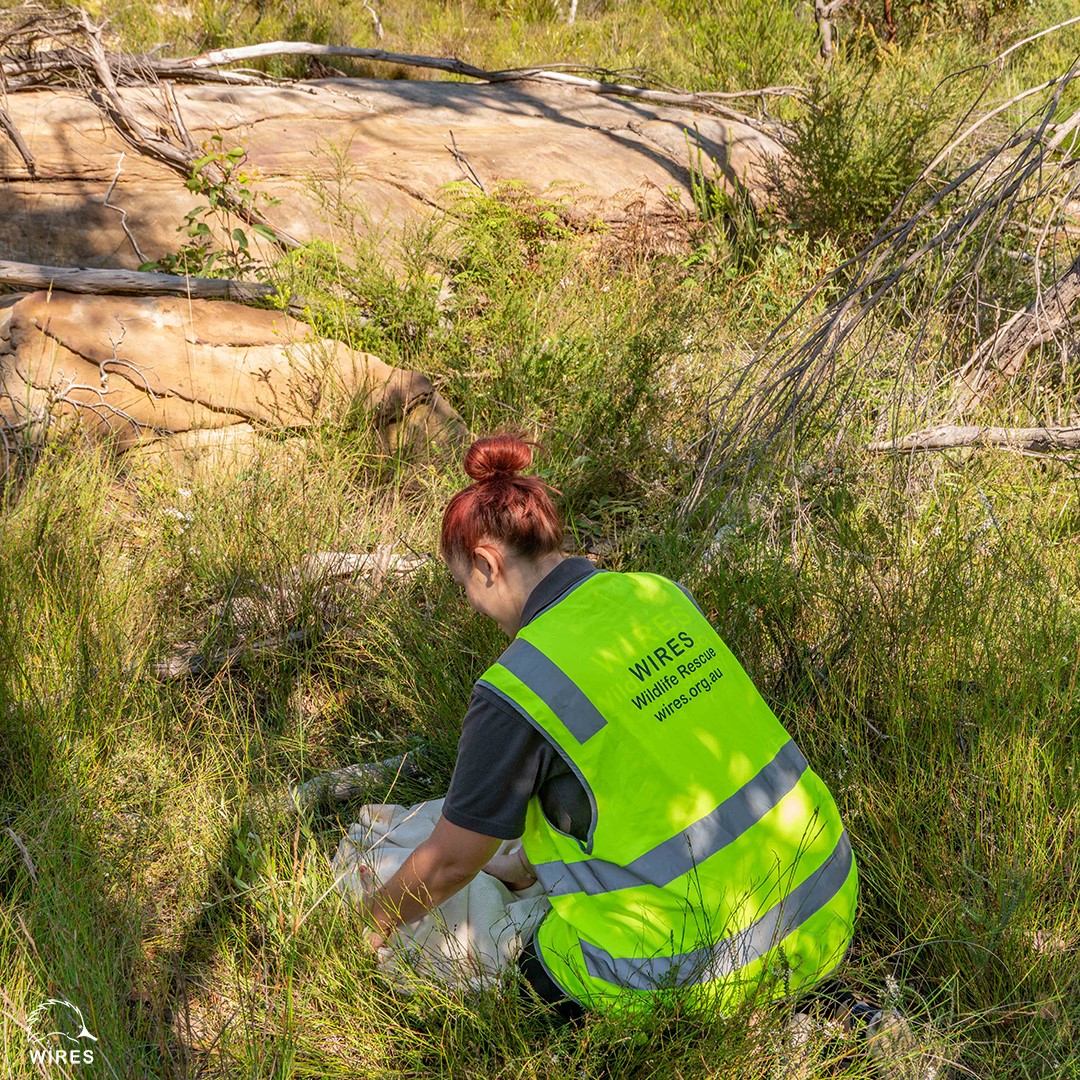
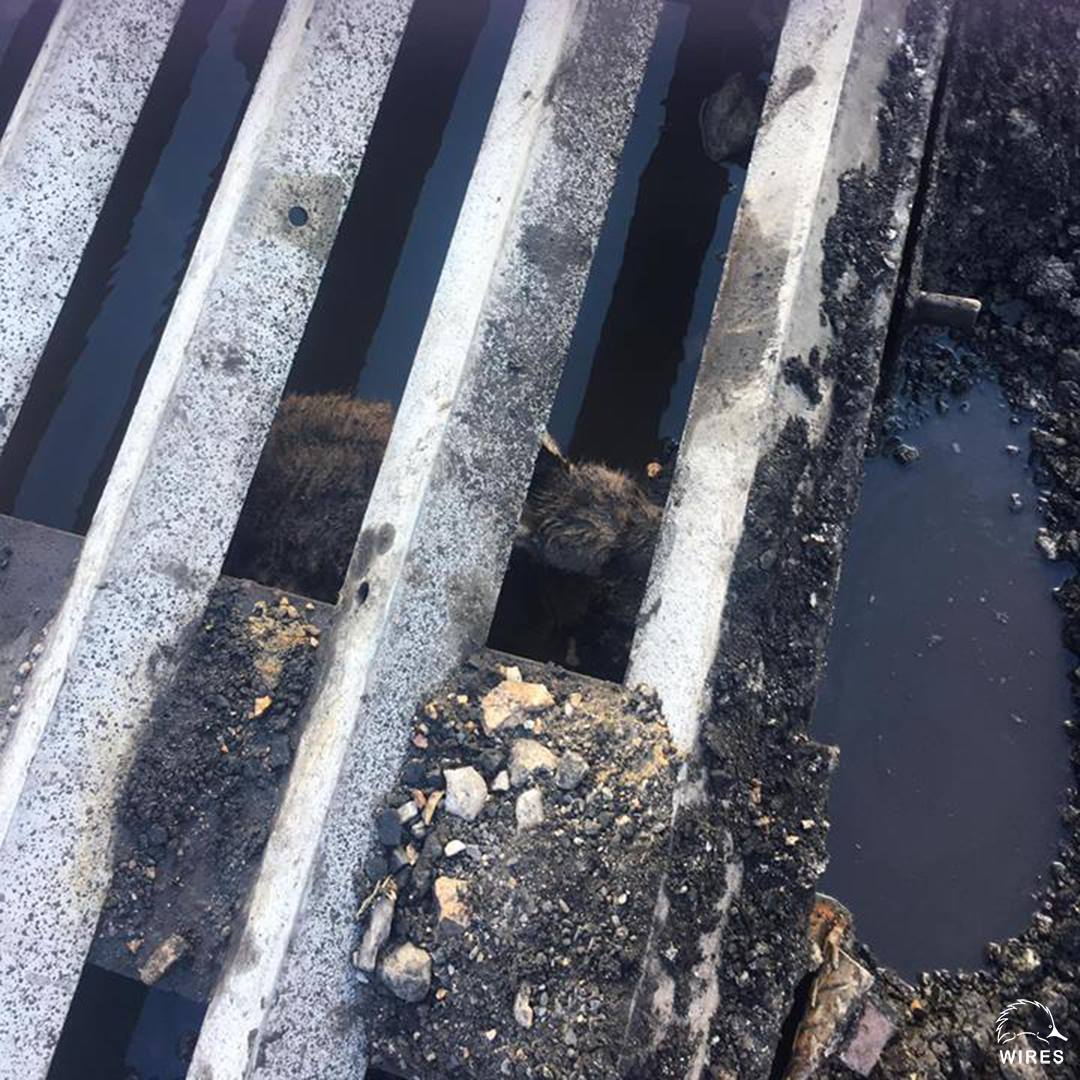
(Left) Every day of the year WIRES volunteers are rescuing and caring for injured, sick and orphaned native animals. (Right) An Eastern Grey kangaroo trapped under a crate. Photos © WIRES
What are some of the most typical rescues?
Slightly over 50% of calls to WIRES Northern Rivers relate to birds.
Seasonal differences in the types of animals reported are apparent, with spring and summer months having particularly high numbers of bats and flying-foxes, birds, possums and reptiles, including snakes. Baby bird calls are particularly high in the December quarter, as many start to fledge and fall while learning to fly, or their nests are blown to the ground in summer storms. Gliders and raptor calls peak in the July to September quarter. Macropod and echidna calls are particularly high in the autumn and winter months.
During 2018-19, around 20% of animals were reported due to being in an unsuitable environment. This may be for snakes inside a house, or where there were concerns about them being in yards or sheds, birds trapped in buildings or animals making homes in roof cavities. Motor vehicles were another major cause of animals being reported, with 18% coming into collision with cars and trucks. A further 11% of animals fell, most typically young birds which were found on the ground. Animal attacks were also commonly reported, with dogs (219 calls); cats (198 calls), and bird attacks (120 calls) topping the list. Barbed wire also is a major source of injury and death for flying foxes, gliders and nocturnal birds.
What are some of the not-so-typical ones?
There are always surprises in store for wildlife rescuers. Some of the less typical rescues in recent times that come to mind (most of these are profiled on our Facebook site) are:
-
Possums and birds that find their way down chimneys (usually looking for homes) and can’t get out.
-
An echidna fell into a macadamia processing bin.
-
A goanna that swallowed golf balls that had been left as “artificial eggs”
-
Puggles (baby echidnas) – only a small number come into care in any one year
-
Unusual or endangered animals always give us excitement – recently two Rufus Bettongs, a Brush-tailed Rock Wallaby, Greater Glider, Barking Owl, Bandy-bandy snake, and more…
-
We have collaborated with a platypus expert/researcher to trap a platypus with a plastic ring around its neck.
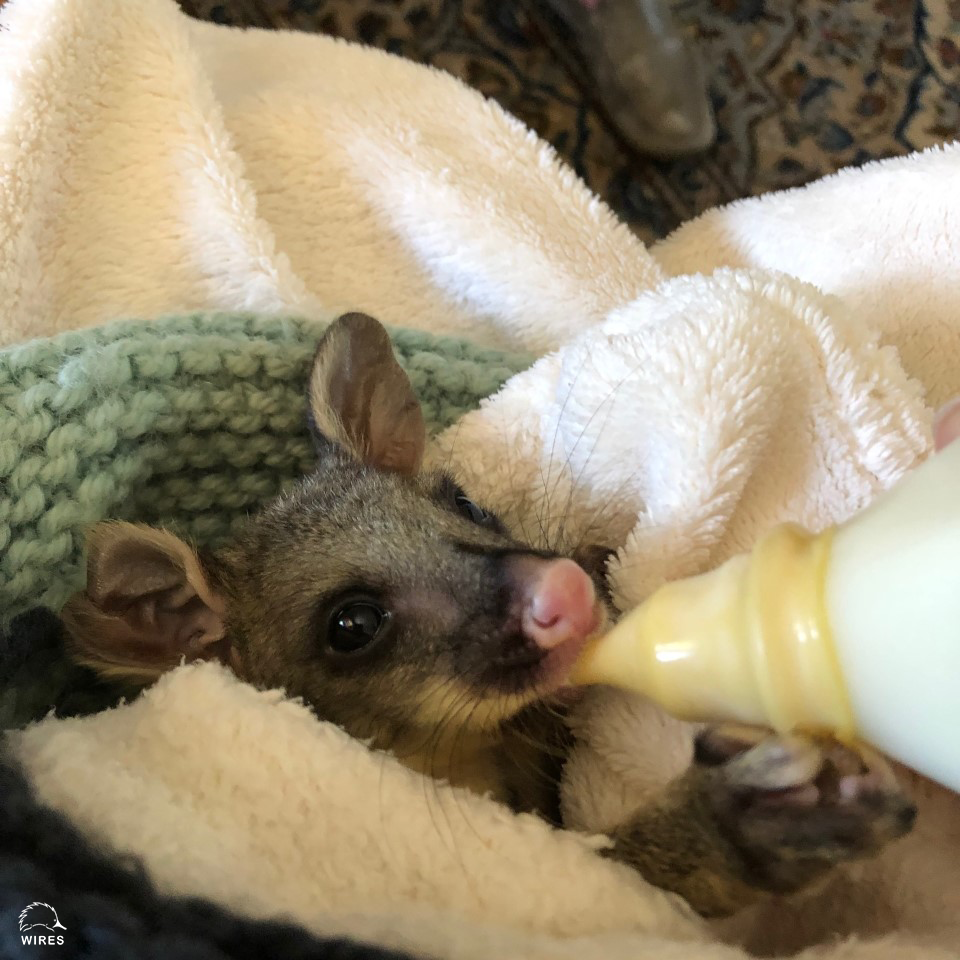
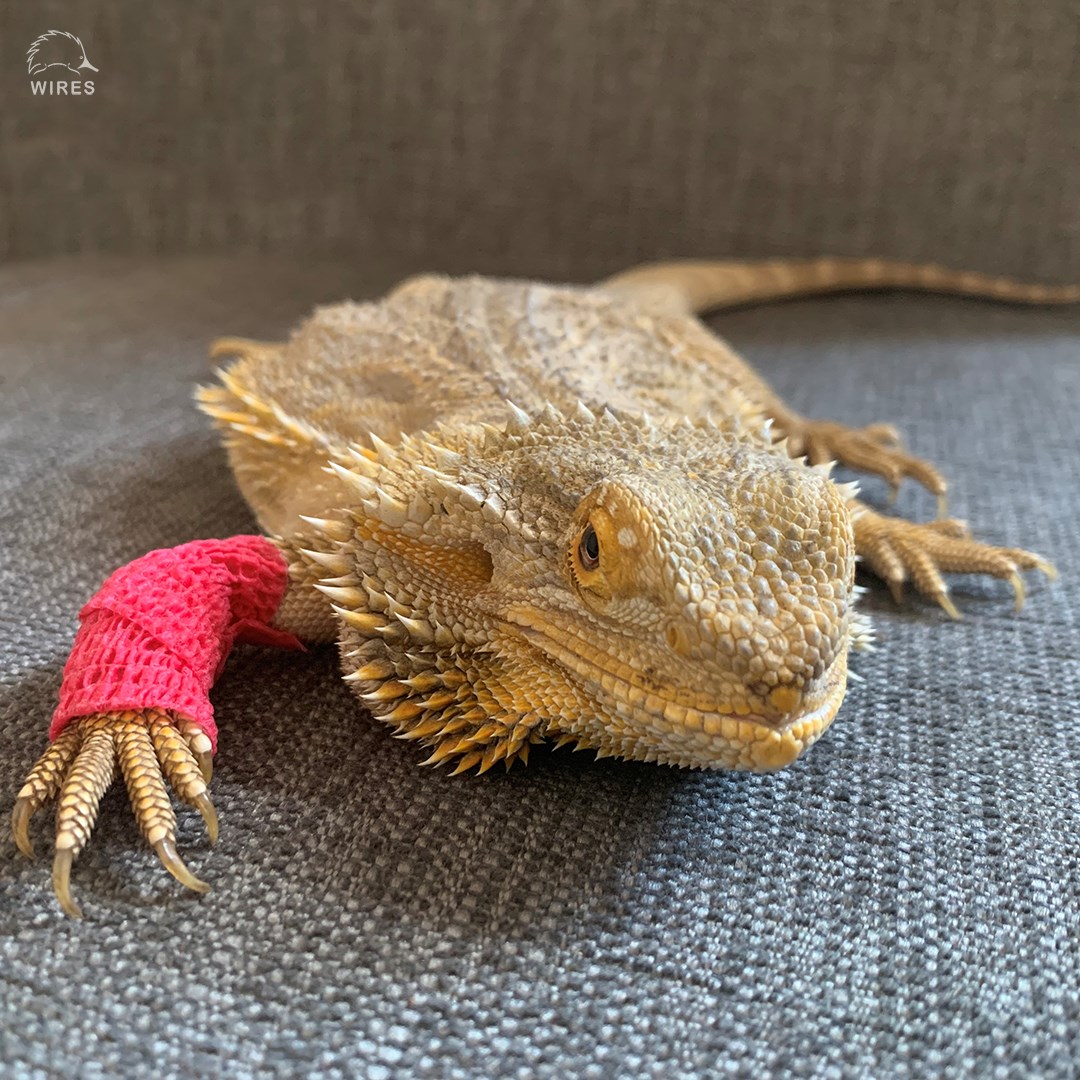
(Left) Orphaned possum joey in WIRES care. (Right) Bearded Dragon sporting his bright pink 3M Vetwrap bandage Photos: © WIRES.
What does a rescue entail?
This varies considerably. Sometimes a rescue can be as simple as picking up an animal that is already contained in a box and transporting it to a local carer or vet. Other rescues may involve catching and containing an animal or bird. All our rescuers are trained to do a basic assessment and provide initial hydration and they contact the Species Coordinator immediately following each rescue for expert advice.
When an animal or bird is rescued where does it go?
This depends on the situation and the animal. It also depends on the time of day (and day of the week) as to whether vets are available. If an animal is badly injured then we try to get them seen to by vets as soon as possible. Our local vets are wonderful and give their services to wildlife without charge. Some of our more experienced carers are also able to perform emergency care and treatment if vets aren’t available out of hours.
If animals aren’t badly injured then they may need short term care or may be able to be reunited with their parents straight away (as in the case of many baby birds). Others may need to go into longer-term care with a specialist carer for that species.
How often are species released?
Adult animals are released as soon as they are well enough. They are always returned to the place where they were found – their home.
Orphaned animals that are raised in care are often buddied-up with others of the same species and released in a batch. We practice “soft release” which means that they are slowly released from an enclosure and given support while they adjust to the outside world – their new home.
Are there particular hotspots where many incidents occur?
Within the Northern Rivers area, urban or town locations accounted for nearly 70% of all calls. Over one third of all calls came from the Lismore Local Government area. Byron shire accounted for just over one quarter of all calls, with a further 21% for Ballina shire, 10% for Richmond Valley and 5% for Kyogle.
There are known “hotspots” on particular roads, where wildlife come into contact with motor vehicles all too often. These are typically some main, busy highways, but also some rural spots where drivers tend to speed through bushland.
WIRES works with local councils to provide data on hotspots, sometimes with signage erected to warn drivers to slow down.
